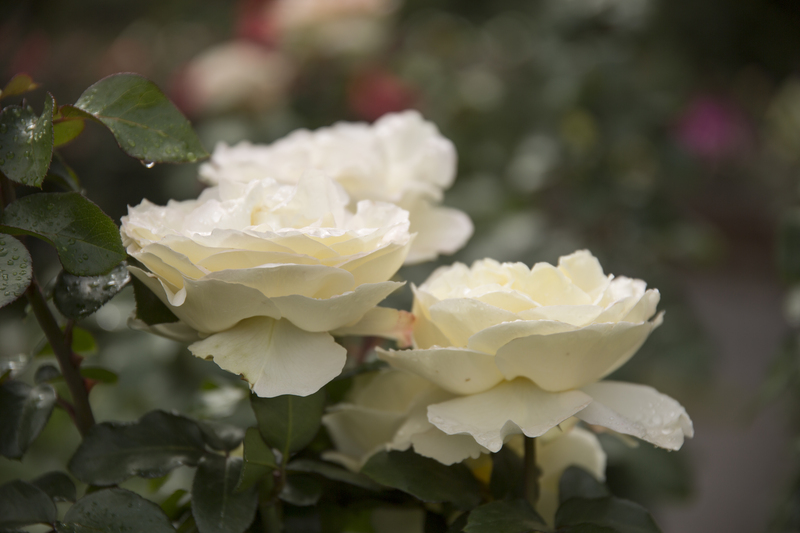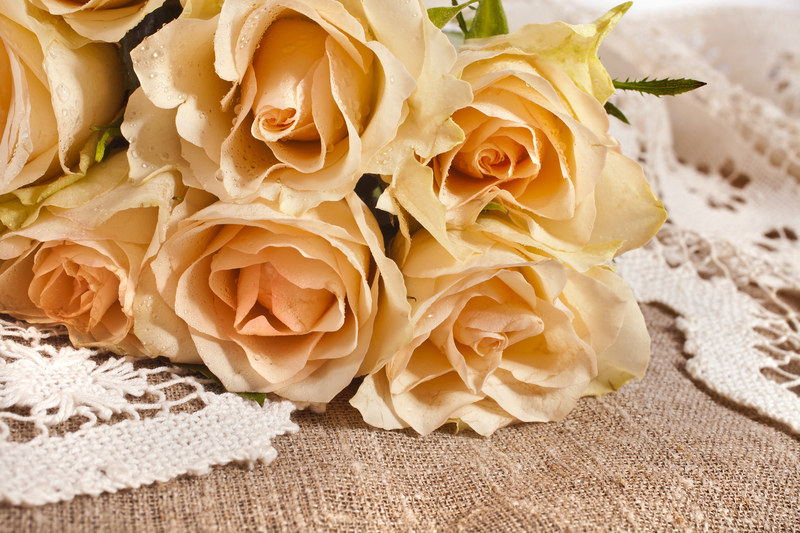Orchid Care Simplified for Enthusiasts
Posted on 26/08/2025
Orchid Care Simplified for Enthusiasts: The Ultimate Guide
Are you mesmerized by the exotic beauty of orchids but unsure how to care for them? You're not alone! Orchids have a reputation for being exquisite yet elusive plants, sometimes intimidating even the most seasoned gardeners. However, with the right guidance, orchid care can be simple, rewarding, and enjoyable for enthusiasts of all levels. This comprehensive guide will demystify orchid maintenance, offering step-by-step instructions, expert tips, and actionable advice sure to help your orchids flourish.

Understanding Orchids: A Brief Overview
Before diving into the specifics of orchid care, it's important to understand what makes these flowering plants unique. Orchids belong to the Orchidaceae family, comprising over 25,000 species and more than 100,000 hybrids. Their diversity is astonishing, varying in size, shape, color, and growing requirements. Popular orchid varieties among enthusiasts include:
- Phalaenopsis (Moth Orchid)
- Cattleya
- Dendrobium
- Oncidium
- Vanda
Despite their differences, most commonly cultivated orchids have similar care requirements. This article will focus on practical orchid care tips that suit a range of popular species.
The Essentials of Orchid Care
1. Light Requirements
Orchids generally thrive in bright, indirect light. Too much sunlight can scorch their leaves, while too little can hinder growth and flowering. Here are some guidelines for providing the ideal lighting:
- Place orchids near an east or south-facing window, where they can receive filtered sunlight.
- If using artificial lights, opt for fluorescent or LED grow lights, positioning them 6-12 inches above the plant.
- Monitor the leaf color: Healthy orchids have light, yellow-green leaves; dark green leaves indicate insufficient light.
2. Temperature and Humidity
Orchids generally prefer moderate temperatures and humidity. Maintaining these conditions can substantially boost your success:
- Daytime temperatures: 65?F-80?F (18?C-27?C)
- Nighttime temperatures: 60?F-70?F (16?C-21?C)
- Humidity levels: 50%-70% is optimal. Increase humidity by grouping plants, using a humidity tray, or operating a room humidifier.
Tip: Avoid placing orchids near heaters, air conditioners, or cold drafts, as extreme fluctuations can stress the plant.
3. Watering Orchids: When and How
Proper watering is crucial and often the trickiest aspect of orchid care for beginners and experts alike.
- Water orchids thoroughly but infrequently. Let the potting medium almost dry out between waterings.
- Avoid overwatering, which can cause root rot. Most orchids prefer to be slightly under-watered rather than over-watered.
- As a general rule, water every 7-10 days. The frequency varies based on orchid type, potting medium, climate, and season.
- If possible, use room temperature rainwater, distilled, or filtered water. Tap water high in salts or chemicals can damage roots over time.
4. Potting Media and Containers
Orchids are epiphytes in nature, meaning they grow on trees and absorb moisture and nutrients from the air. Therefore, well-draining potting media are a must:
- Bark chips, sphagnum moss, perlite, or coconut husk are all suitable for orchid potting mixes.
- Choose pots with ample drainage holes to prevent water stagnation.
- Repot orchids every 1-2 years, ideally after blooming, to refresh the medium and check root health.
5. Fertilizing Orchids
Orchids benefit from regular, light feeding rather than infrequent heavy doses. A common phrase among enthusiasts is: "Feed weakly, weekly."
- Use a balanced, water-soluble orchid fertilizer (20-20-20 or similar) at half or quarter strength.
- Fertilize every other week during the active growing seasons (spring and summer), tapering off during autumn and winter.
- Flush the potting medium with clear water monthly to prevent fertilizer salt build-up.
Solving Common Orchid Problems
Yellow Leaves
Yellowing leaves can result from overwatering, direct sunlight, or natural aging. If only the bottom leaf turns yellow and drops, this is a normal occurrence. Multiple yellow leaves typically signal a problem with water or light.
Root Rot
Root rot is a leading cause of orchid decline:
- Ensure pots and media drain freely.
- Remove mushy, brown roots during repotting and treat healthy roots with a fungicide if necessary.
Failure to Bloom
If your orchid has healthy leaves but refuses to bloom, consider:
- Increasing light intensity while avoiding sunburn.
- Allowing a slight temperature drop at night, which can trigger flowering in many orchid varieties.
- Reviewing your feeding schedule--over-fertilizing can inhibit blooms.
Pests and Diseases
Common orchid pests include mealybugs, scale insects, and spider mites:
- Inspect plants regularly for pests.
- Remove insects with a cotton swab dipped in alcohol or use insecticidal soap as needed.
- Maintain good air circulation to prevent fungal and bacterial diseases.
Repotting Orchids: When & How
Repotting is a vital aspect of easy orchid care. Orchids typically need repotting every 1-2 years, or sooner if you notice the potting medium breaking down or roots creeping out of the pot.
- Carefully remove the orchid from its pot, taking care not to damage the roots.
- Trim dead or rotted roots with sterile scissors.
- Choose a new pot just large enough to accommodate the roots, and add fresh orchid potting mix.
- Firmly press the orchid into place and water sparingly for a few days to acclimate.
Orchid Care Through the Seasons
- Spring and Summer: Increase watering, fertilize as the plant grows, and provide plenty of filtered light. Monitor for pests as growth speeds up.
- Autumn: Reduce feeding and watering frequency as growth slows. Some orchids, like Dendrobiums, may require a rest period.
- Winter: Watch out for drafts and temperature drops. Water sparingly, but maintain humidity with trays or humidifiers.
Smart Tips for Orchid Enthusiasts
- Rotate your orchids every week for even light exposure and attractive, symmetrical growth.
- Label your orchids with their variety and date of last repotting.
- Watch for new root and leaf growth as a sign your care routine is working.
- If growing many orchids, group by care requirements to streamline your routine.
- Be patient! Orchids are slow growers. A healthy plant will reward you with stunning blooms in due course.
Choosing the Best Orchids for Beginners
For orchid enthusiasts just starting, some varieties are easier than others. The most beginner-friendly include:
- Phalaenopsis (Moth Orchid): Thrives in average home conditions and blooms for months.
- Paphiopedilum (Slipper Orchid): Prefers indirect light and standard humidity.
- Cattleya: Tolerates slight neglect and blooms profusely with the right care.
These types withstand minor fluctuations in care and still reward you with stunning flowers, making them perfect for learning the ropes of orchid maintenance.
Myths and Facts About Orchid Maintenance
- Myth: Orchids are "high maintenance" plants.
- Fact: While their needs are specific, orchids are quite forgiving with the right setup and attention.
- Myth: All orchids require the same care.
- Fact: Different species need slightly different conditions; always learn about your particular orchid's preferences.
- Myth: Orchids must be watered with ice cubes.
- Fact: Ice watering can shock roots. Always use room temperature water and water thoroughly.

Frequently Asked Questions About Easy Orchid Care
How often should I water my orchid?
Most orchids need watering once a week, but always check the medium first. If it's still damp, wait a few days. Avoid set watering schedules--listen to your plant!
When should I repot my orchid?
Every 1-2 years, preferably after blooming. Signs your orchid needs repotting include broken-down medium, roots growing over the pot edge, or persistent moisture buildup.
Can orchids grow in regular potting soil?
No--regular soil retains too much moisture and suffocates orchid roots. Always use a specialized orchid potting mix for optimal health.
Why is my orchid not flowering?
Lack of light, inconsistent temperatures, or improper feeding are common culprits. Try adjusting these variables for better results.
Conclusion: Orchids Made Easy for Every Enthusiast
Orchid care need not be a mystery! By understanding the basics of light, water, potting media, and feeding, even novice growers can enjoy abundant blooms and robust plants. Remember, it's about observing your orchids and responding to their needs. With experience and patience, you'll unlock the secrets of simple orchid care and join the ranks of successful orchid enthusiasts. If in doubt, less is often more--clean water, filtered light, good air movement, and a watchful eye will ensure your orchids thrive for years to come.
Happy growing, and may your home be forever graced with the elegance of orchids!

